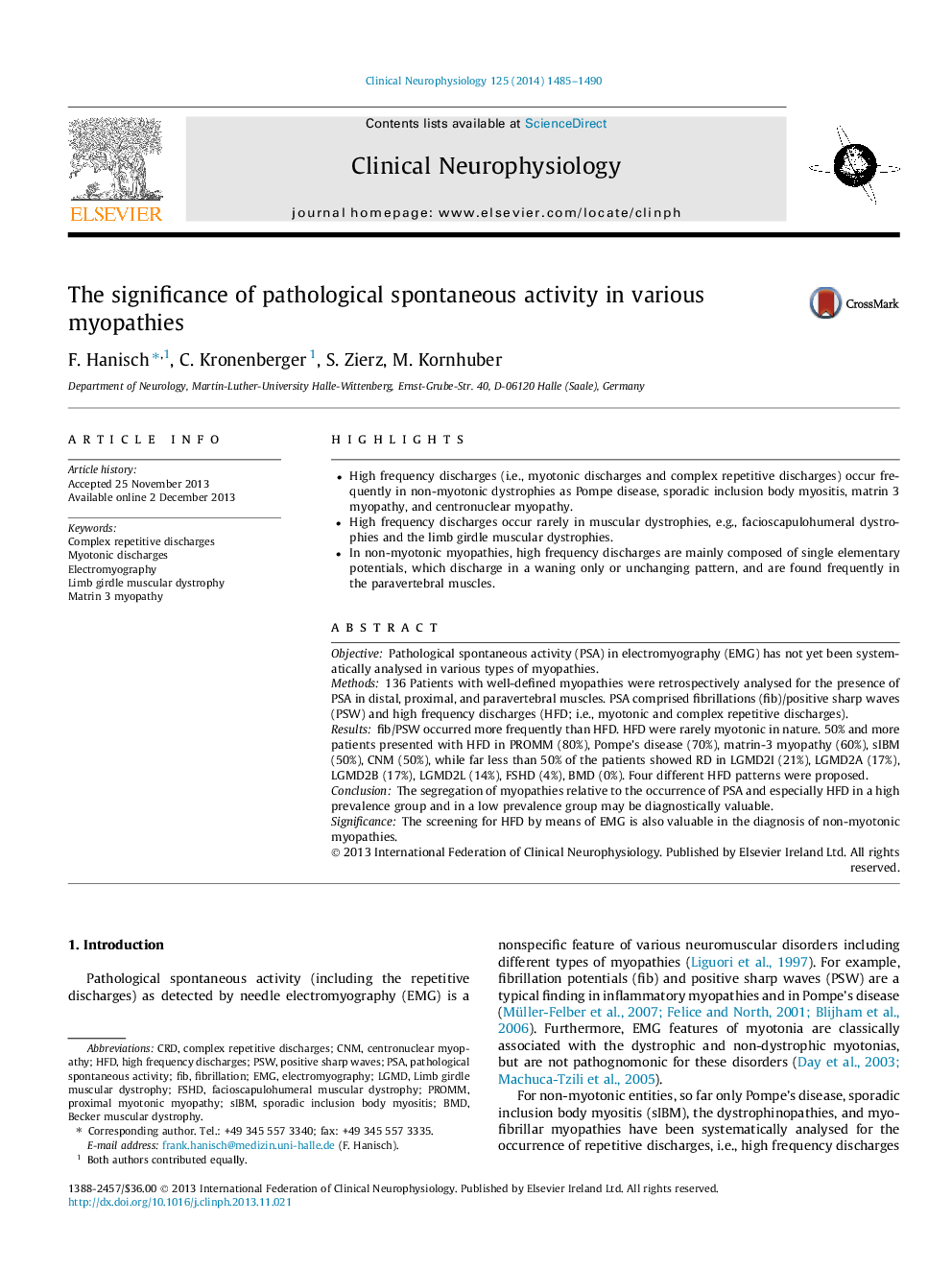| Article ID | Journal | Published Year | Pages | File Type |
|---|---|---|---|---|
| 3043921 | Clinical Neurophysiology | 2014 | 6 Pages |
•High frequency discharges (i.e., myotonic discharges and complex repetitive discharges) occur frequently in non-myotonic dystrophies as Pompe disease, sporadic inclusion body myositis, matrin 3 myopathy, and centronuclear myopathy.•High frequency discharges occur rarely in muscular dystrophies, e.g., facioscapulohumeral dystrophies and the limb girdle muscular dystrophies.•In non-myotonic myopathies, high frequency discharges are mainly composed of single elementary potentials, which discharge in a waning only or unchanging pattern, and are found frequently in the paravertebral muscles.
ObjectivePathological spontaneous activity (PSA) in electromyography (EMG) has not yet been systematically analysed in various types of myopathies.Methods136 Patients with well-defined myopathies were retrospectively analysed for the presence of PSA in distal, proximal, and paravertebral muscles. PSA comprised fibrillations (fib)/positive sharp waves (PSW) and high frequency discharges (HFD; i.e., myotonic and complex repetitive discharges).Resultsfib/PSW occurred more frequently than HFD. HFD were rarely myotonic in nature. 50% and more patients presented with HFD in PROMM (80%), Pompe’s disease (70%), matrin-3 myopathy (60%), sIBM (50%), CNM (50%), while far less than 50% of the patients showed RD in LGMD2I (21%), LGMD2A (17%), LGMD2B (17%), LGMD2L (14%), FSHD (4%), BMD (0%). Four different HFD patterns were proposed.ConclusionThe segregation of myopathies relative to the occurrence of PSA and especially HFD in a high prevalence group and in a low prevalence group may be diagnostically valuable.SignificanceThe screening for HFD by means of EMG is also valuable in the diagnosis of non-myotonic myopathies.
